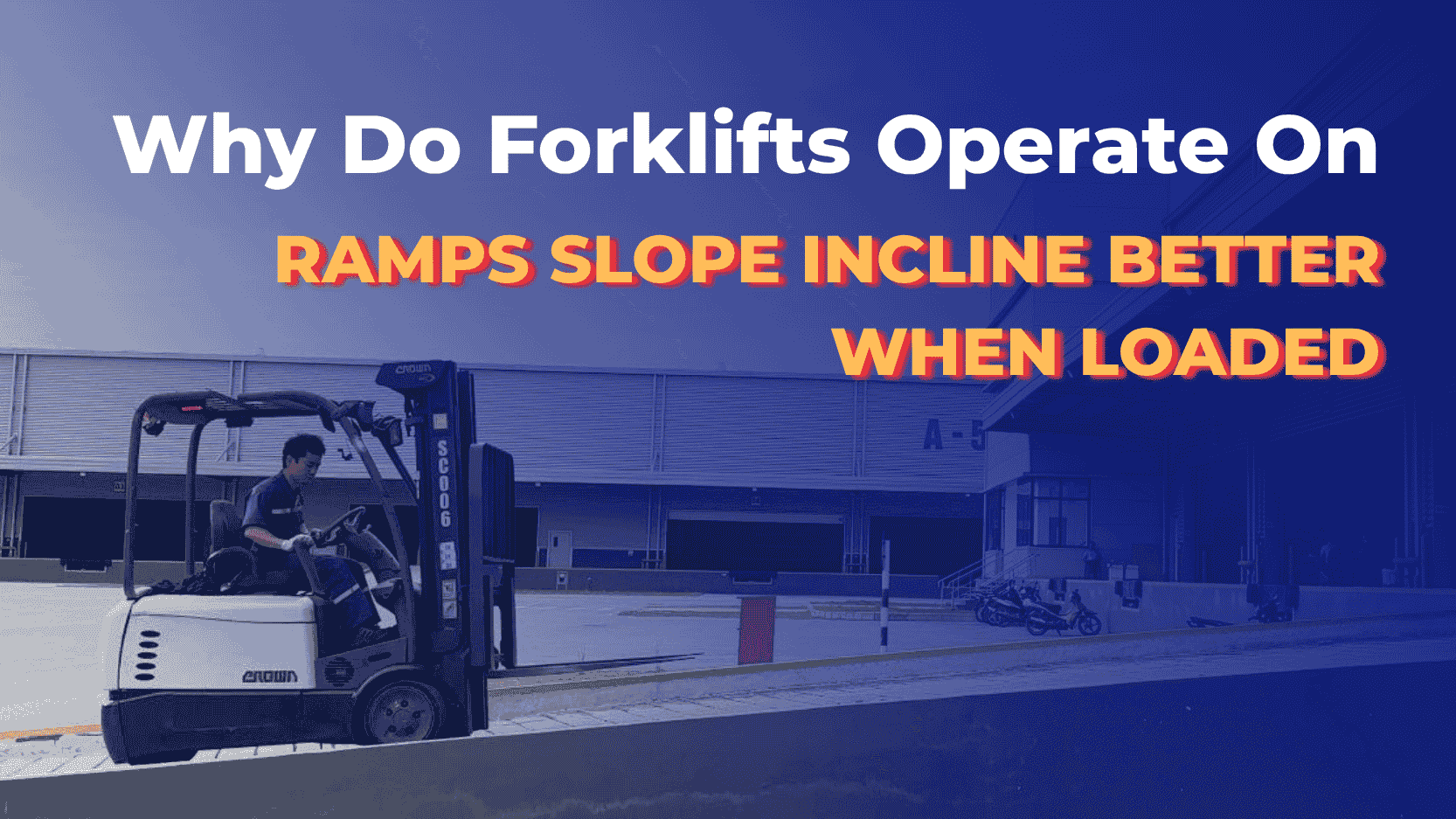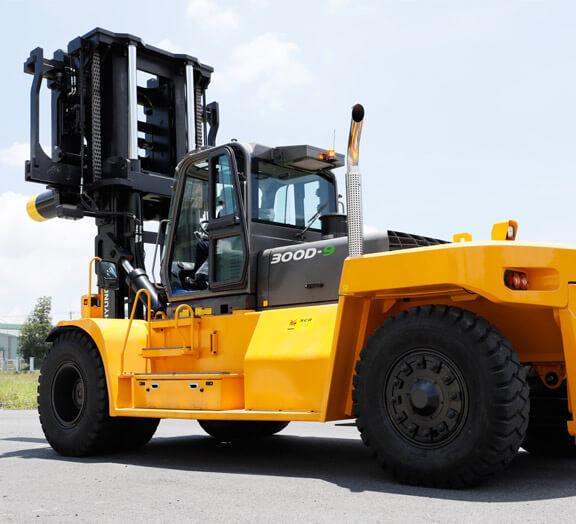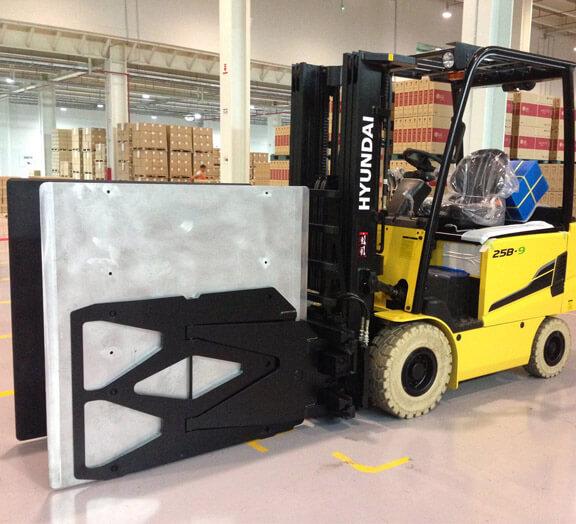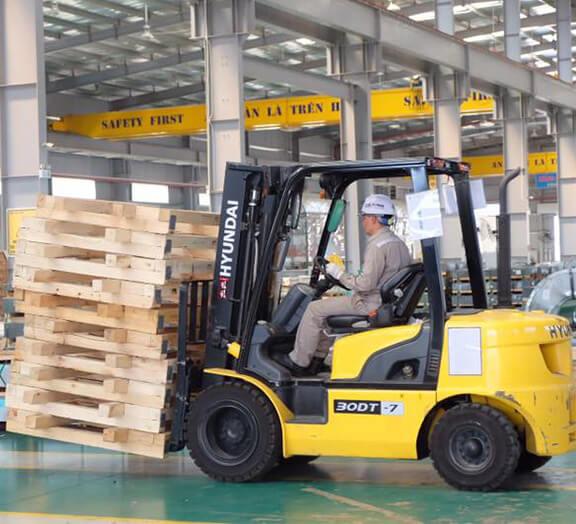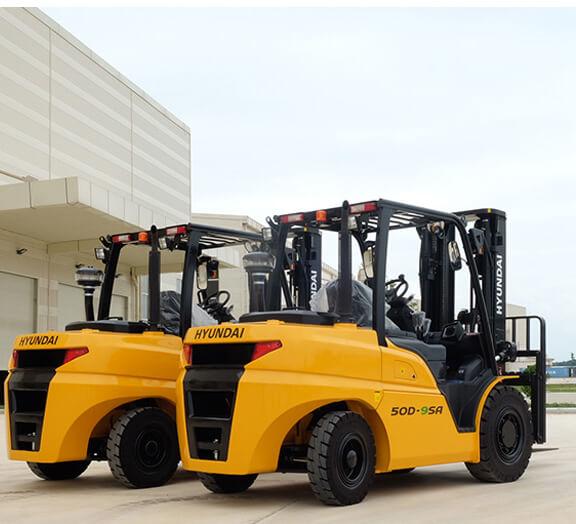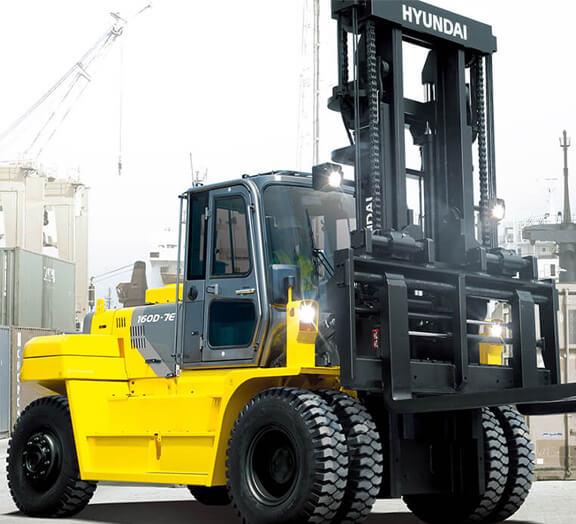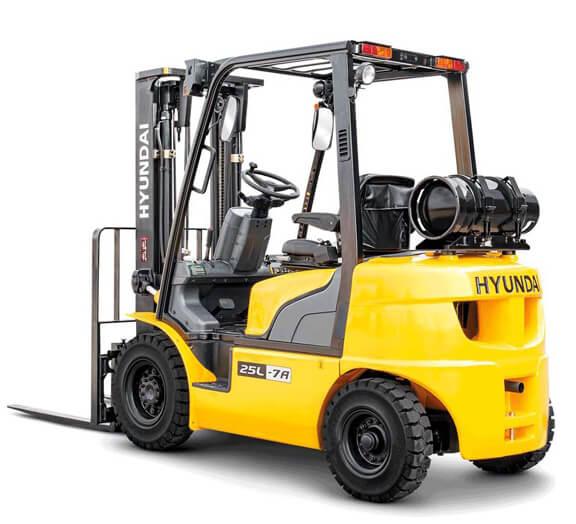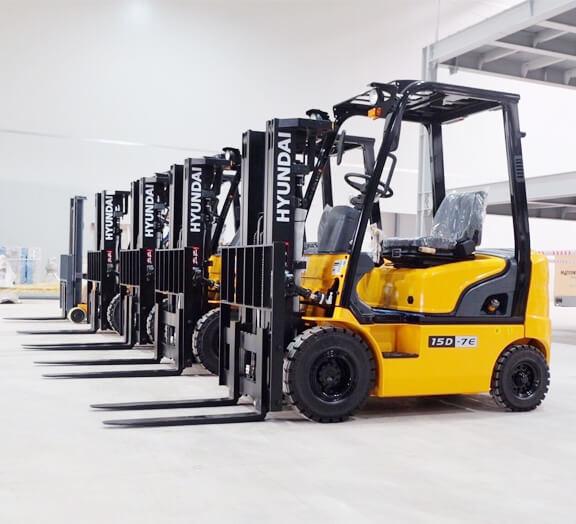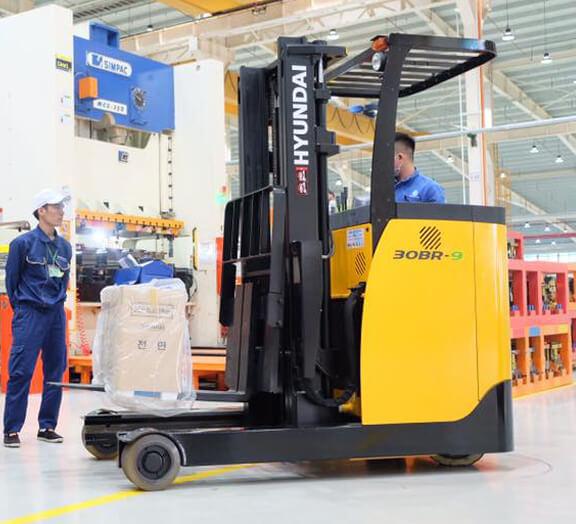Did you know that forklifts operate on ramps better when loaded? This may sound counterintuitive, but there's a clear technical explanation involving weight distribution and tire traction.
When operating a reach truck on a ramp, slope or incline
1. Improved center of gravity with a load
When using a Reach truck, especially on ramp, slopes or when lifting loads to high positions, the center of gravity plays a critical role in ensuring safety and stability. To fully understand forklift operations, it’s important to know where the load center is located.
The reach truck has a unique design: the heaviest part (counterweight) is at the rear, while the forks and load are positioned at the front. When unloaded, the center of gravity shifts toward the back—where the counterweight sits. This creates a temporary imbalance, especially when the mast is raised or when driving on a ramp. In such cases, the truck may feel unstable, experience wheel slip, or become harder to control during quick turns.
On the other hand, when carrying a load, the weight helps to rebalance the center of gravity, bringing it closer to the middle of the truck. As a result, the truck runs more smoothly, has better traction, and is less likely to tip over.
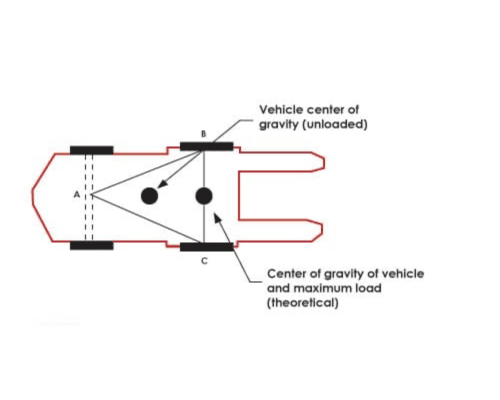
2. Increased traction for drive wheels
Reach trucks are typically front-wheel drive. When unloaded, the drive wheels at the front have less contact pressure with the ground, reducing traction. When a load is applied, more weight is transferred onto the front wheels, increasing friction between the tires and the ramp surface. This added grip improves climbing ability and reduces the risk of slipping.
3. Greater stability with a load
A load improves road grip and reduces the chances of wheel spin or the truck tipping backward while driving uphill. Without a load, the forklift may lift slightly at the front due to insufficient downward force on the drive wheels. This can cause the wheels to lose traction and the forklift to struggle or fail to climb the slope.
4. Reach truck design is optimized for loaded operation
Reach trucks are engineered to perform best under load. When operating without a load, several characteristics, such as force distribution, traction control, and overall balance, deviate from the intended design, which can lead to reduced efficiency and less stable handling.
When diesel forklifts and sit-down electric forklifts operate on ramps, slope or incline
When unloaded, diesel forklifts and sit-down electric forklifts may lose traction on slippery slopes, feel jerky or unstable due to lack of grip, and become harder to control when going downhill because the center of gravity shifts toward the rear.
Just like reach trucks, both internal combustion and electric sit-down forklifts operate more effectively on ramps when carrying a load.
1. Better traction
With a load, more weight is applied to the drive wheels (usually rear wheels, or front wheels depending on the design), increasing friction and grip between the tires and the ramp surface. This helps the forklift climb slopes more easily and reduces the risk of wheel slip.
2. Improved balance of the forklift
Forklifts are designed to work under load. When driving on a ramp without a load, the rear counterweight may cause slight imbalance and vibration, especially while climbing.
3. More effective power transmission
When carrying a load, diesel engine and electric motors operate more smoothly and generate more torque. This results in steadier performance and better power delivery when climbing ramps.
Safety tips when driving internal combustion forklifts on slopes:
- Always drive forward when going uphill and reverse when going downhill with a load.
- Avoid turning while climbing a slope.
- Maintain steady throttle, avoid sudden acceleration.
- Regularly inspect brakes, tires, and tire pressure.
Conclusion: Why do forklifts perform better on ramps when loaded?
More friction at the drive wheels: The load increases downward force on the drive wheels, improving grip and reducing slippage.
Better weight and center of gravity distribution: The load at the front shifts the center of gravity closer to the middle of the forklift, increasing balance during operation.
Less wheel spin and instability: With stable weight at the front, the forklift is less likely to tip back or lose control on steep slopes.
What to focus on when choosing a forklift for slope performance
1. Choose a forklift with anti-roll back system
Today, some forklift brands offer anti-roll features. Most Hyundai forklift models are equipped with Anti-Roll Back system, which prevents the forklift from rolling backward when the operator releases the brake or switch. This system ensures higher safety when operating on ramps or inclined surfaces.
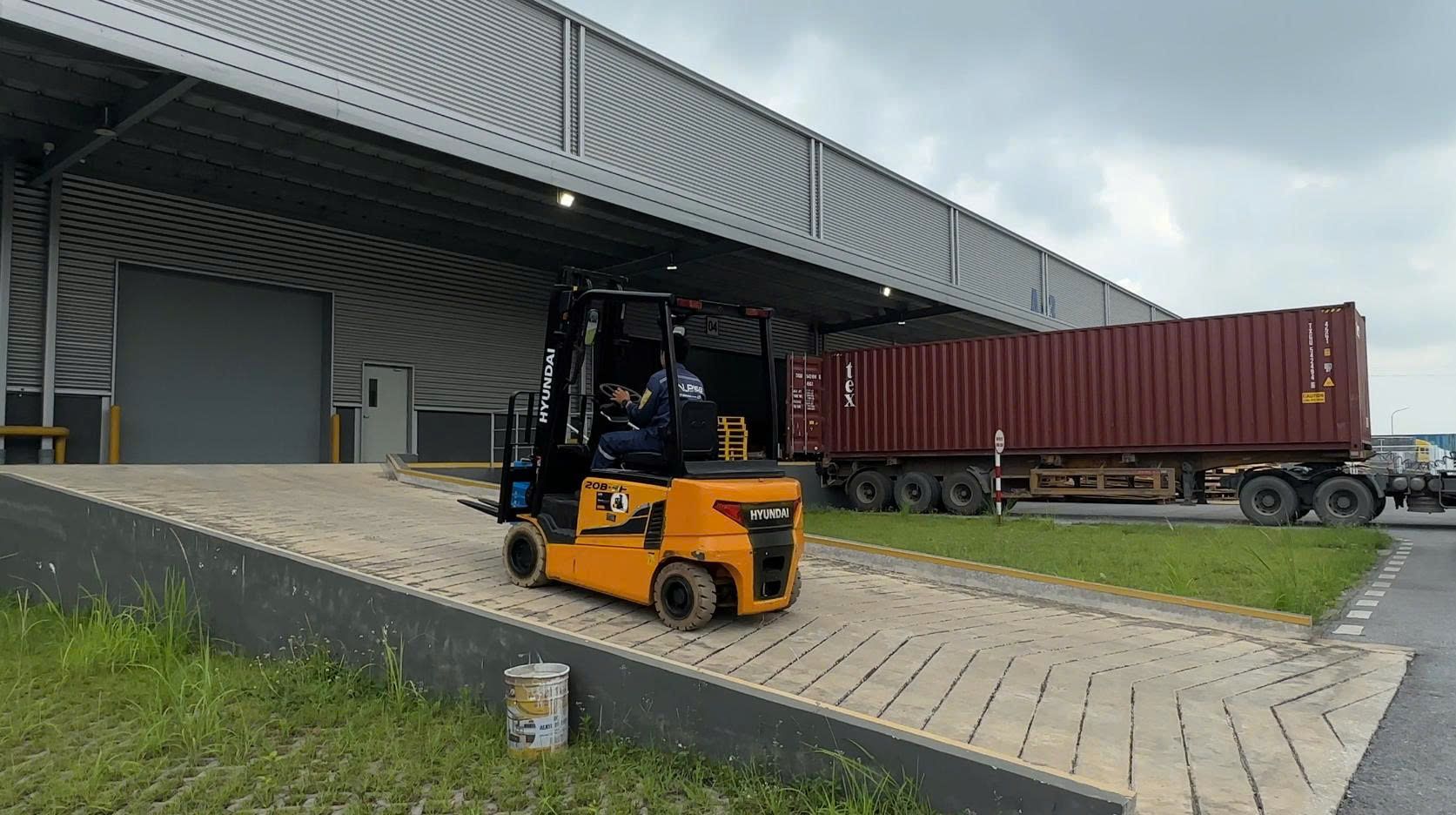
Hyundai electric forklifts use anti-roll back systems
2. Engine power and torque of forklift
For diesel forklifts, it’s important to choose a powerful engine (over 50 HP) to ensure strong pulling force when climbing slopes. Diesel engines are preferred because they offer higher torque compared to gasoline or LPG engines.
For electric forklifts, choose models with high motor power (kW) and strong torque, since torque is the key factor in slope-climbing performance. AC motors are generally stronger and more durable than DC motors.
3. Forklift center of gravity and load distribution
The higher the load capacity, the more power is needed to climb slopes. Choose forklifts with a low and balanced center of gravity to improve stability and reduce the risk of slipping or tipping when driving on ramps.
4. Wheel type and quality
Wheels directly affect traction on slopes. Depending on the working environment, different wheel types are recommended. Use solid rubber tires for concrete or asphalt surfaces. In wet or sloped areas, choose anti-slip treaded tires or air-filled tires with good grip.
5. Forklift gradeability
This is a critical technical specification.
Gradeability = maximum slope a forklift can climb (measured in % or degrees)
Example: A forklift with 15% gradeability can climb a 15% incline.
Choose a forklift with gradeability of 15% or higher if the job site involves frequent slope operation.
| Watch the actual performance of Hyundai reach truck climbing a slope in this video.
6. Transmission system of internal combustion forklifts
Hydraulic drive systems or automatic transmissions help ensure smooth gear shifting and stable pulling force when climbing slopes.
7. Battery capacity and voltage in electric forklifts
A larger battery means longer operating time and stronger pulling power. Choose forklifts with higher battery voltage (e.g., 48V, 72V, 80V instead of 24V) and higher capacity (Ah). The higher the amp-hour rating, the more powerful and durable the forklift will be when working on ramps.
8. Human factor
Beyond technical specs, safety during forklift operation on ramps is equally important. Even a good forklift can fail if not properly maintained. To ensure consistent ramp performance, regularly check and maintain the brakes, tires, engine, and battery.
Train drivers to inspect forklifts before operation and only hire certified operators who understand proper ramp driving techniques: always drive forward uphill and reverse downhill when carrying a load.
These are some key points to consider when choosing a forklift for slope operations. If you're looking for a forklift with strong ramp-climbing capability and modern hill-start functions, contact Nhat Lo Phat 168 for quick and professional support.
Contact: 0943 341 688
Email: luantran@1688.com.vn
- Nhat Lo Phat 168 Co., Ltd – Official distributor of Hyundai and Crown forklifts
- Northern Vietnam: 093 208 1688
Southern Vietnam: 090 345 1688 - Fanpage: facebook.com/Nhat-Lo-Phat-168
- YouTube: nhatlophat1688
- Instagram: @nhat_lo_phat_168


